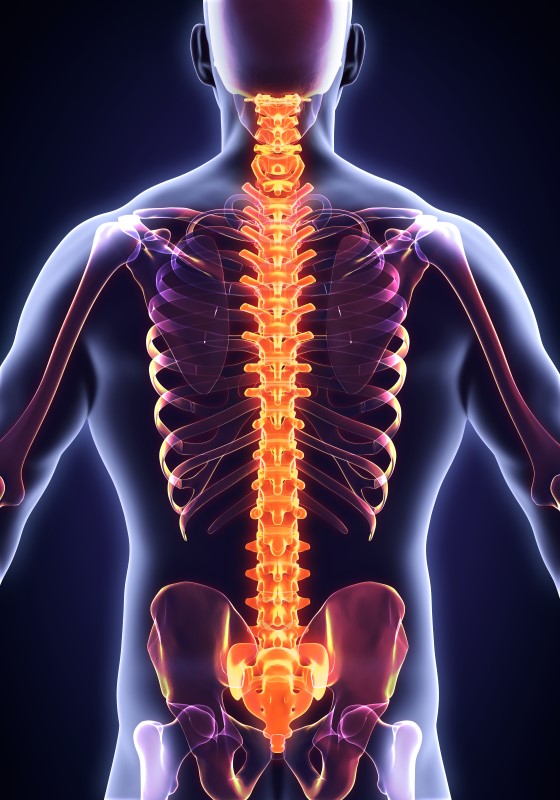Dr. K. Appaji Krishnan
Senior Consultant-Spine Surgery
Apollo Cancer Centres
Dr. K. Appaji Krishnan is a renowned Spine Surgeon, currently practising at Apollo Hospitals, Chennai. He has an experience of over 2 decades operating complex spinal- paediatric and adult deformities, adult degenerative diseases.
Conditions
Spine
Complex spinal deformity
A complex spinal deformity is a serious condition that results in the rotation or curvature of the spine.
Degenerative Disc Disease
Degenerative disc disease refers to the normal and usual changes in your spinal discs that develop with age.
Disc Herniation
The bones (vertebrae) which make up the spine in your back are cushioned by small discs. These small discs are flat and round, with a tough layer on the outside (annulus)
Spinal tumour
A spinal tumour is a growth of cells (mass) inside or around the spinal cord. A tumour can be two kinds: harmless (benign) or dangerous (malignant).
Stenosis
Spinal stenosis is when the open spaces within your spine become narrow, which can apply pressure on your spinal cord and the nerves that pass through the spine.
Face Joint Pain
The joints that connect each of the vertebrae in the spine are called facet joints. Facet joints help in movement, along with the discs, which help in stability of each motion segment.
Failed Back Surgery Syndrome
Patients who experience recurring pain even after a spinal surgery done for back pain or leg pain, experience Failed Back Surgery Syndrome.
Cervical myelopathy
Cervical myelopathy is a serious condition characterized by the compression of the spinal cord in the neck (cervical) region.
Nerve compression
Nerve compression, also known as nerve entrapment or pinched nerve, occurs when a nerve is subjected to pressure from surrounding tissues.
Osteoporosis
Osteoporosis is a bone disease characterized by the loss of bone density and strength, making bones fragile and more prone to fractures.
Sacroiliac joint pain
Sacroiliac (SI) joint pain refers to discomfort or pain that originates from the sacroiliac joints, which are located
Spinal instability
Spinal instability refers to the loss of normal alignment and function of the spine, which can lead to abnormal movement between vertebrae, causing pain, nerve compression,
Spinal tuberculosis
Spinal tuberculosis, also known as Pott’s disease or tuberculous spondylitis, is a form of extrapulmonary tuberculosis (TB) that affects the spine.
Whiplash
Whiplash is a neck injury that occurs when the head is suddenly and forcefully jerked backward and then forward, resembling the motion of a whip cracking.
Procedure
RECONSTRUCTION
Patients who have a deformity or misalignment affecting a larger portion of their spine can go for complex spinal reconstruction surgeries.
SPINAL DECOMPRESSION SURGERY
A laminectomy is a surgical procedure that removes the lamina, which is a portion of the vertebral bone.
SPINAL FUSION SURGERY
Lumbar & Multilevel Spinal Fusion Surgery A spinal fusion surgery joins two or more vertebrae.
DISC REPLACEMENT
Artificial disc replacement is a newer surgical procedure which relieves back or neck pain. An intervertebral disc in the spine is replaced with an artificial one.
REVISION PROCEDURES
Revision spinal surgery fixes the outcome of a previous procedure that had not been performed properly.





UNDERSTANDING YOUR SPINE
The spine consists of 24 back bones plus the tailbone. The back bones bear most of the body’s weight and are under a lot of pressure. Disks of cartilage between each back bone helps in cushioning and protection. The spine forms a protective canal of bone within which the spinal cord is encased.
The spinal cord is a long, delicate structure that begins at the end of the brain stem at the top and continues to go down till the lower part of the spine. The spinal cord consists of nerves that transmit incoming and outgoing messages between the brain and the rest of the body.
Spinal injuries may affect the bones of the spine, the spinal cord, or the roots of the spinal nerves (short branches of the spinal nerves), which pass through the spaces between the vertebrae. The bundle of nerve roots that extend downward from the end of the spinal cord (cauda equina) may also be injured. Injuries of the spinal cord cause nerve damage or dysfunction in one the following ways

SPINE
Because the spinal cord is surrounded and protected by the spine, injuries of the spine or its connective tissue (such as disks and ligaments) can also injure the spinal cord. Such injuries include the following
Ligaments may lose their grip and hence the vertebrae may move freely. These injuries turn out turn out to be be unstable. When vertebrae move, they can compress the spinal cord or its blood supply and damage spinal nerve roots. An unstable injury to the spine need not damage the spinal cord immediately. For example, the injury may cause spasms of muscles supporting the spine that prevent the vertebrae from moving much. However, after hours or days, muscle spasms may subside, enabling the vertebrae to move freely, which will cause damage to the spinal cord.
Most of those who have a spinal cord injury will have an injury to the spine too, except for children for it might not always be the case with them.
Spinal cord injuries are mostly caused by external trauma such as vehicle accidents, accounting for almost half of them. Other causes include falls, sports mishaps, work-related accidents, and violence (such as a knife or gunshot wound). Rarely, non-traumatic injury to the spinal cord is a possibility too, due to tumours, blood loss, or stenosis.


